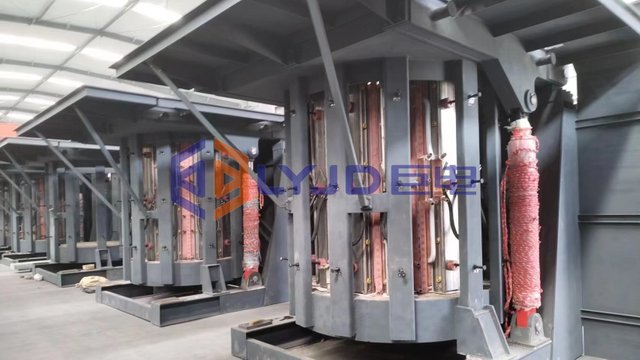What is metal induction melting rolling mill machine hot rolling mill
Induction metal melting is a process that uses electromagnetic induction to melt metal.

In this method, high-frequency alternating current is passed through a coil, creating a rapidly changing magnetic field.
If a conductive material such as a metal is placed in this magnetic field, eddy currents are induced in the material.
These eddy currents generate heat due to the material's electrical resistance, causing the material to heat up rapidly and eventually melt.
The process is commonly used in industries such as foundries and metalworking to melt a variety of metals, including steel, iron, copper and aluminum.
It offers the advantages of efficient heating, precise temperature control, and the ability to melt metal quickly and evenly.
Additionally, it can be used in both small and large metal smelting operations. How does an induction cooker work?
An induction furnace is an energy-efficient, clean furnace used for melting all types of metals, including steel, iron, copper, zinc and aluminum.
Since an induction furnace does not require an electric arc, the heat of melting can be easily adjusted, making it a suitable choice for preserving valuable alloying elements. Additionally, these types of ovens produce minimal waste and pollutants, helping to reduce your overall carbon footprint.
The principle of induction furnace
Faraday's law describes how a magnetic field interacts with a circuit to produce an electromotive force, a phenomenon called electromagnetic induction.
Therefore, once a piece of conductive material (such as the charge in a furnace or a load) is placed in a changing magnetic field, an electric current is produced. When electricity flows, it encounters resistance and dissipates energy in the form of heat through the Joule effect.
Types of induction cookers
There are two types of induction cooktops, each with specific requirements:
Core induction furnace
An iron core (or trough) induction furnace acts as a transformer (at the mains frequency), thereby transferring electrical energy from one AC circuit to another. In a trough induction furnace, alternating current flows through a primary coil surrounding an iron core.
The secondary coil is made from a ring of molten metal surrounding the core and primary coil. When current flows through the primary, a larger current is induced in the secondary, which then generates heat through the Joule effect.
Channel furnaces meet the needs of high-volume, high-volume operations requiring small alloy changes, as well as continuous casting projects. Due to constant operating conditions and temperatures, the service life of a refractory lining can last for years and thousands of operations. Channel furnaces are commonly used to melt certain alloys, iron, aluminum, zinc and copper.
Coreless induction cooker
Coreless induction furnaces can also be operated via a transformer. However, the secondary coil is omitted. The primary coil is a water-cooled copper coil surrounding a crucible or refractory lining containing the metal charge. The primary coil therefore induces current directly into the metal charge.
In addition, frequent alloy changes and repeated cooling and heating operations can also shorten the life of the refractory lining. However, coreless refractory liners are also significantly cheaper and faster to replace.
Induction furnace refractory lining
Furnace lining refractory materials play a vital role in the smooth operation of induction furnaces. Stable refractory lining for optimal metallurgical performance. As a consumable pad